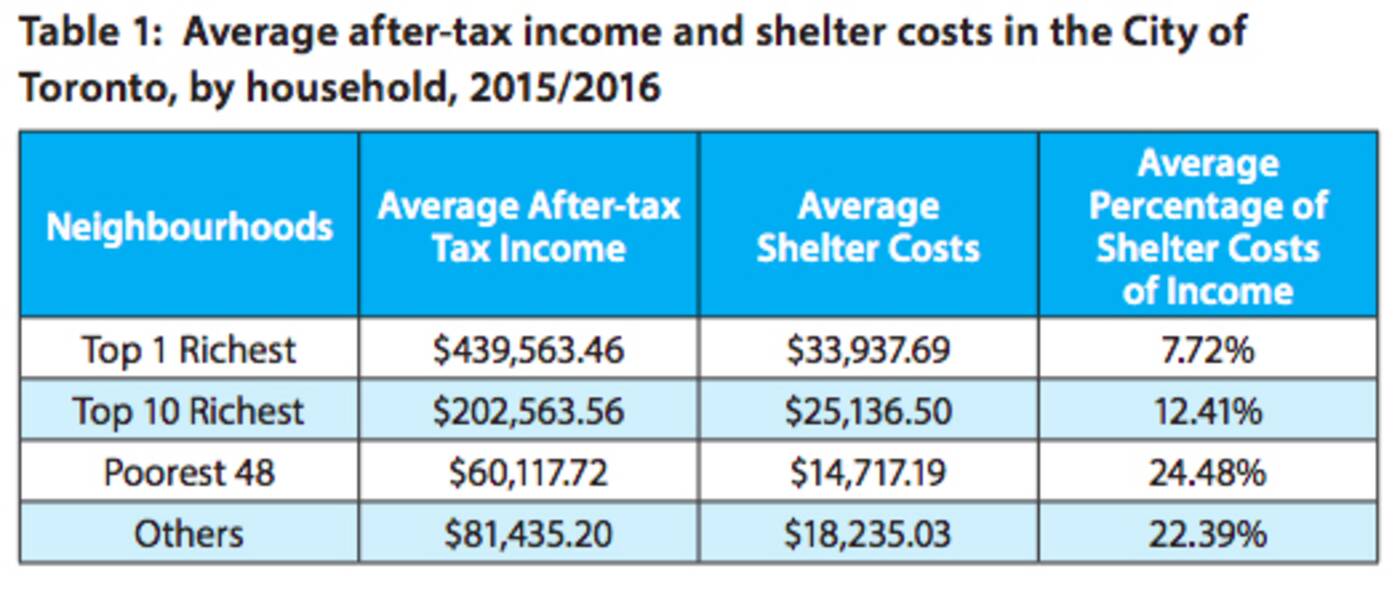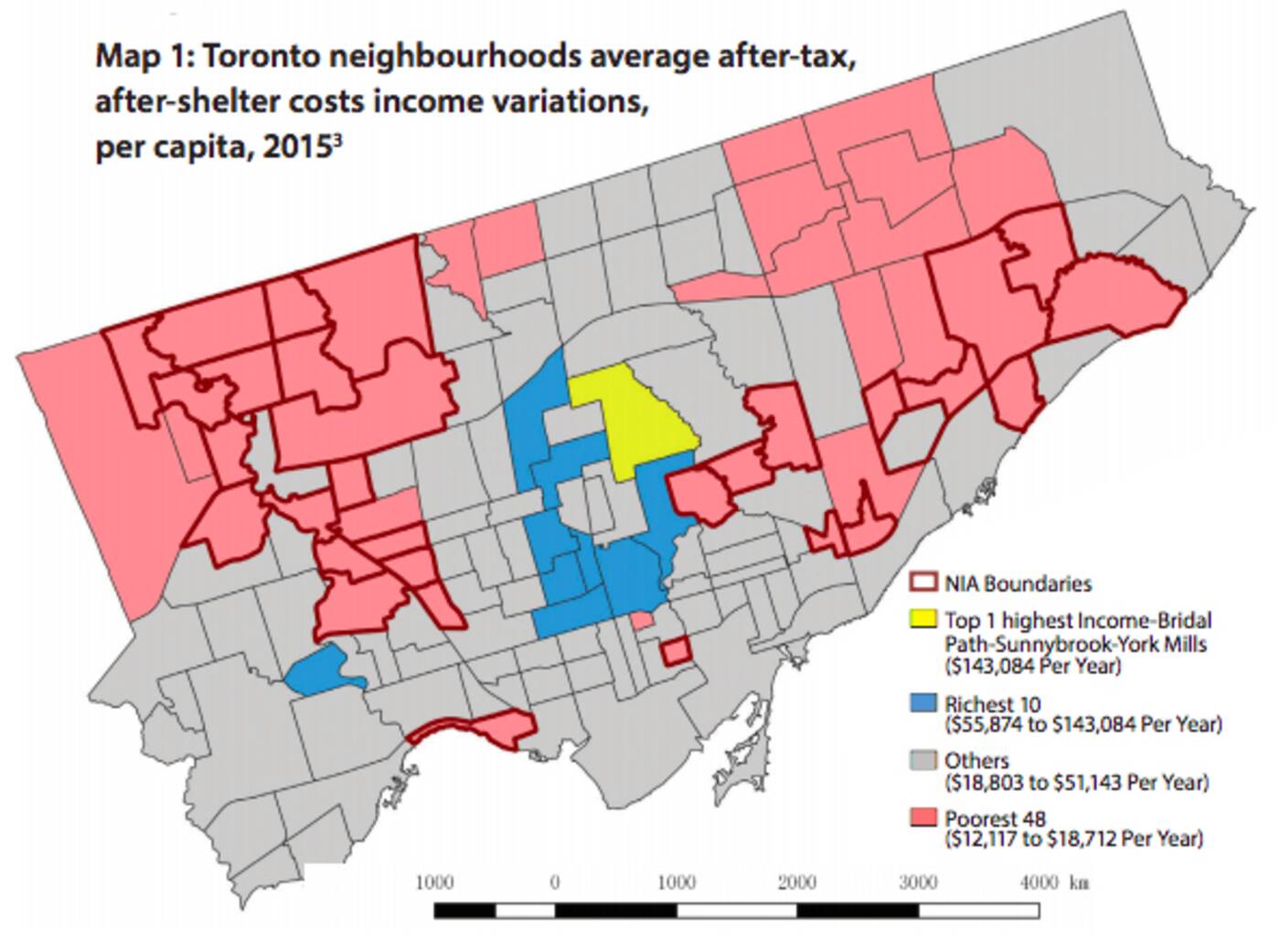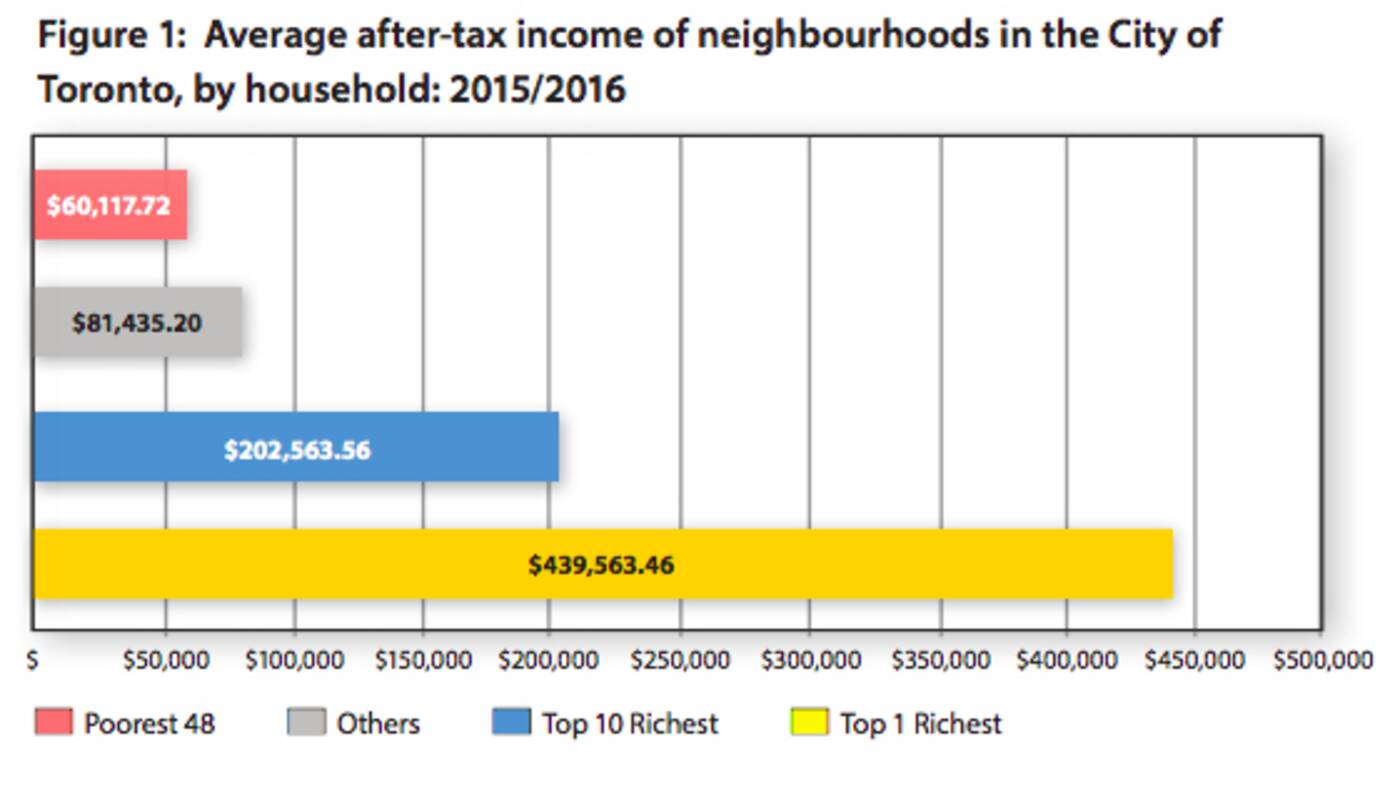
It can (and has) been argued that economic inequality is one of the most important social justice issues facing the world today, with the ever-growing wealth gap linked to everything from racial disparities in education to shorter life expectancies for low-income Canadians.
Nothing illustrates this stark divide in life circumstances better than an urban housing market.
In Toronto, wealth and poverty are physically manifested across the city in the form of crammed apartment buildings, gleaming condo towers, poorly-maintained community housing complexes, million-dollar rowhouses and staggeringly spacious mansion estates.
While massive houses and luxury condos are expensive in terms of absolute costs, a new report shows that they're actually cheaper for residents of Toronto's richest neighbourhoods (relative to their income) than a humble apartment would be for a resident in one of the city's poorest neighbourhoods.
"Proportionally speaking, the very rich spend far less on their shelter costs than the rest of us do," reads the report, which is entitled "Cheap Mansions and Expensive Apartments: Why the rich pay less and the poor pay more."

Image via Open Policy Ontario.
Published over the weekend by John Stapleton's social policy consultancy Open Policy Ontario, the report explores "proportional housing costs" in all 140 of Toronto's distinct neighbourhoods using data from the most-recent Canadian census.
Stapleton and his colleagues Richard Maaranen and Yvonne Yuan identified the top 10 richest neighbourhoods in Toronto based on income, as well as the city's 48 poorest neighbourhoods and the "very richest" neighbourhood within the top 10 (Bridle Path/Sunnybrook/ York Mills.)
The analysts found that residents of the Bridle Path neighbourhood put just 8 per cent of their income, on average, toward shelter costs. Among the top ten richest neighbourhoods (which include Rosedale, Forest Hill, Casa Loma, Leaside, Lawrence Park and Kingsway South,) residents spend an average of 12 per cent on housing.
In the city's 48 poorest neighbourhoods, however, residents were found to spend 24 per cent of their income on housing on average, with renters paying nearly 26 per cent of their income per month and home owners in poor neighbourhoods spending 19.5 per cent.
"Comparing the average percentage of income paid towards shelter is an important measure of housing inequality," reads the report.
"In absolute terms, the rich pay more for anything they consume than the poor do... in proportional terms, where the benchmarks are mansions and apartments, the rich pay the least and the very rich pay hardly anything."

Image via Open Policy Ontario.
Stapleton and his colleagues draw the following conclusions based on their analysis of proportional housing costs in Toronto's richest and poorest neighbourhoods, though they also note trends vary among the 82 "other" Toronto neighbourhoods that are neither rich nor poor.
- A simple comparison of the cost of a mansion to that of a modest apartment hides the relative and proportional affordability of these two types of lodgings.
- Housing is less affordable for the poor than it is for any other income category in Toronto.
- Residents in the poorest neighbourhoods have the greatest difficulty in meeting their shelter costs. It is quite possible that substandard housing is the least affordable based on income.
- The rich and the very richest among us have the easiest time affording their lodgings.
- Inequality in the City of Toronto is much greater than realized.
The report's authors also illustrate through a series of graphs just how wide the income gap is between residents of rich and poor residents, with the richest pulling in an annual household income of $439,563 and the 48 poorest neighbourhoods averaging $60,118.
"Looking at Figure 1, some readers may be struck by how narrow the gap appears between low-income neighbourhoods and 'other' neighbourhoods in Toronto. The average household income difference is less than $20,000," reads the report.
"Likewise, they may be struck by how big the stretch is up to the next bar, average incomes in the ten richest neighbourhoods. It is also striking how very much higher the average income is in single richest neighbourhood — more than double the average of the top ten."

Image via Open Policy Ontario.
The paper points to Amazon founder Jeff Bezos buying a record-breaking $165 million house in California to illustrate the reality of proportional housing, nothing that, while the estate is exorbitantly expensive, it's equivalent to only one third of one per cent of the billionaire's net worth.
For someone making $60,000 per year, this would be like spending $75 on a house.
"Throughout the Canadian and other first-world economies, especially in our larger cities, we are starting to see a convergence between low and middle incomes, while the rich are pulling away from the rest of us," concludes the report.
"This convergence is evident in the proportional cost of housing."
by Lauren O'Neil via blogTO

No comments:
Post a Comment